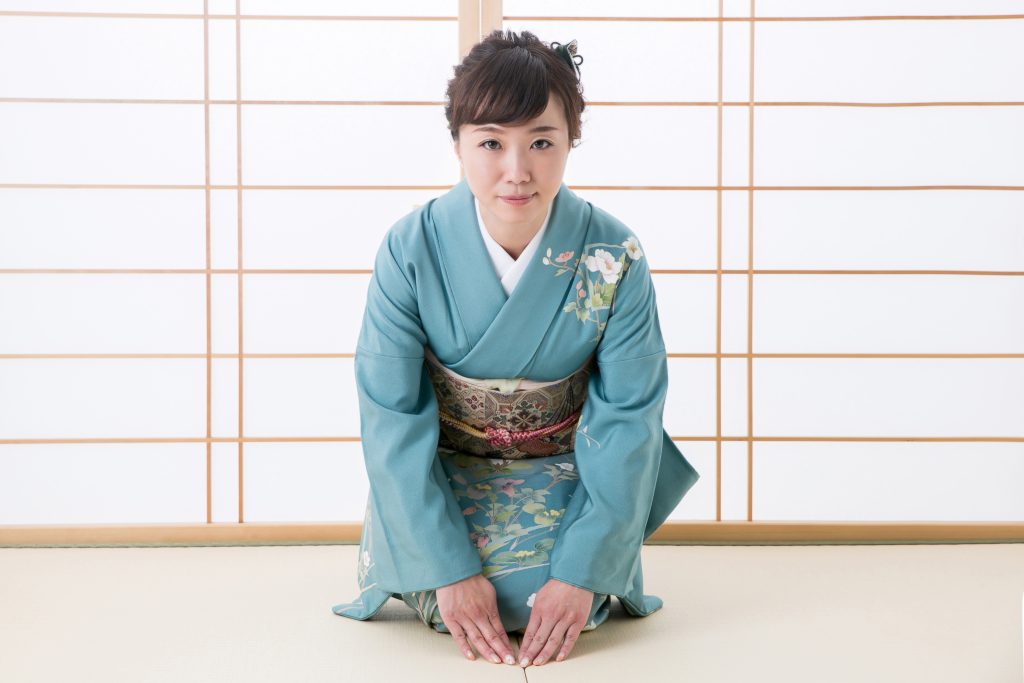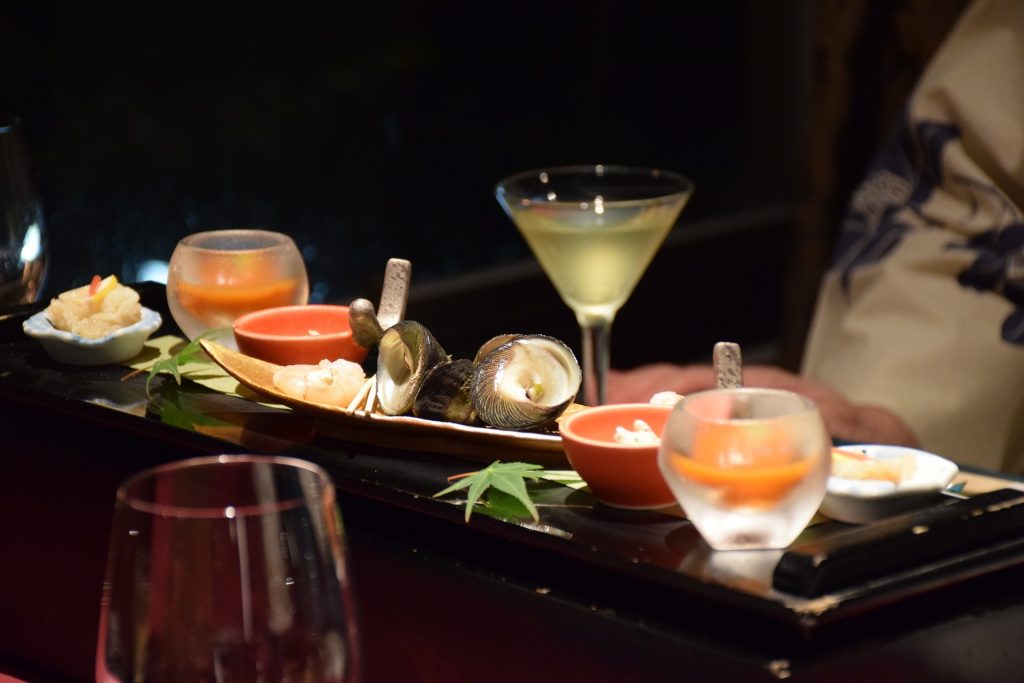If you have ever been to Japan, you have surely seen Japanese people bowing politely and greeting each other. Of course, this is because they respect the other person and use polite words. Another reason is that Japanese people use formal greetings when they meet someone for the first time, that is, someone who is still distant from them. Today, I would like to focus on formal Japanese greetings that we use throughout the day. I’ll also include audio so you can practice!
Table of contents
Japanese Formal Greeting list
First, take a look at this list. These are the 11 essential formal greetings. Detailed explanations and model conversations for each will follow.
| English expressions | Japanese Roma-ji | Hiragana |
|---|---|---|
| Good morning. | Ohayou gozaimasu | おはようございます。 |
| Hello. | Kon’nichi wa | こんにちは 。 |
| Good evening. | Konbanwa | こんばんは。 |
| Good night. | Oyasumi nasai | おやすみなさい。 |
| Good bye. | Sayounara | さようなら。 |
| Thank you in advance. Nice to meet you. (When you met first time) | Yoroshiku onegai shimasu | よろしくおねがいします。 |
| Excuse me. | Sumimasen | すみません。 |
| Please go ahead. Here you are. (When you hand something over) | Douzo | どうぞ。 |
| Thank you | Arigatou gozaimasu | ありがとうございます。 |
| thank you for the meal. (Before you start to eat) | Itadakimasu | いただきます。 |
| thank you for the meal (When you finish eating) | Gochisou sama deshita | ごちそうさまでした。 |
Japanese Basic Greeting with audio and review test
If you are planning to go on a trip, check out this content.
I’ve included both for those times when you want to speak either formally or casually with people you get to know.
Once you’ve practiced, take the quiz!
Greetings by time

Ohayō gozaimasu (おはようございます)
Ohayō gozaimasu (おはようございます) is greeting for morning time. “gozaimasu” indicates the polite part. So, if it is casual, we will say “ Ohayō (おはよう)“. It is important to greet people in the morning.
Kon nichi wa (こんにちは)
Kon nichi wa (こんにちは) is used to during day time like “Good afternoon”, ”Hello”. “は” is pronounced as [ha] in normal hiragana, but in this case, it is pronounced as わ[wa].This greeting is the same for both casual and formal occasions.
Kon ban wa (こんばんは)
Kon ban wa (こんばんは) is used to during night time like “Good evening”. “は” is pronounced as [ha] in normal hiragana, but in this case, it is pronounced as わ[wa]. This greeting is the same for both casual and formal occasions.
Oyasumi nasai (おやすみなさい)
Oyasumi nasai (おやすみなさい) is used to before going to sleep like “Good night”. if it is casual, we will say “ oyasumi (おやすみ)“.
Sayōnara (さようなら)
Sayōnara (さようなら) is used when you say goodbye to someone. In casual situations, you can also say “Bai Bai (バイバイ)” in Japanese.(It is often written in katakana.)
Greetings for thank you and apologize.

Sumimasen (すみません)
Sumimasen (すみません) is probably one of the greetings that best describes Japanese people.
We use it to apologize, which is the same as excuse me, and also to say thank you. In the latter case, we say how we feel: I’m sorry you had to go through all this trouble for me. But thank you. This is a very good representation of the Japanese spirit which is that “I don’t want to disturb anybody.”
Dōzo (どうぞ)
We will use when you want to give up your seat on the bus, when you want to ask someone to go ahead of you, or when you want to hand something over. If you repeat the phrase ” Dōzo Dōzo (どうぞ, どうぞ)” , it means you are encouraging them.
Arigatō gozai masu (ありがとうございます)
Arigatō gozai masu (ありがとうございます) is used to appreciation for something “Thank you”. if it is casual, we will say “ Arigatou (ありがとう)“.
Model conversation<1>
Situation: The old woman came into the bus. You want to give your seat to her. A: You, B: the old woman A : Anō,Sumimasen. Dōzo. (あのう、すみません。どうぞ) B : Sumimasen. Arigatōgozaimasu. (すみません。ありがとうございます。) A : Iie. (いいえ。) A : Ah, excuse me. Please (have a seat). B : Thank you. Thank you. A : No problem.
Yoroshiku onegai shimasu (よろしくおねがいします)
The phrase “よろしくおねがいします(yoroshiku onegai shimasu)” is often used in a variety of situations. One is to say to someone you meet for the first time, we have a meaning “Please get along with me from now on.
The other is in situations where you are asking someone to do something for you. Since you are making a request, it is polite to add the words “よろしくおねがいします<Thank you in advance>”.
Model conversation<2>
Situation: When you met someone first time, you introduce yourself. A: アレックスさん, B: すずきさん A : Hajimemashite. Watashi wa Alex desu. (はじめまして。わたしは Alex です。) B : Hajimemashite. Watashi wa Suzuki desu. (はじめまして。わたしは 鈴木です。) Yoroshiku onegai shimasu.(よろしく おねがいします。) A :Nice to meet you. I’m Alex. B :Nice to meet you too. I am Suzuki. I'm looking forward to knowing you.
Model conversation<3>
Situation: Greetings when making a request to someone
A : Kaigi no shiryou o okurimasu. Kakunin shite kudasai.
(かいぎ の しりょう を おくります。かくにん してください。)
Yoroshiku onegai shimasu.
(よろしく おねがいします。)
A : I will send you the materials for the meeting. Please confirm.
Thank you in advance.
If you want to do business successfully with Japanese or Japanese companies, it is important to make them trust you! And Japan still has a slightly analog business culture.
There are a variety of business card holders, but most Japanese business people use these two-piece business card holders.You put your business card in one side and the business card you received from the other side.
Greetings for meals

Itadaki masu (いただきます)
This is the greeting you say before a meal. It includes gratitude to the person who cooked the food and gratitude to the food itself, such as animals and vegetables. Observe Japanese people in restaurants. Even when we eat alone, we say ” Itadakimasu(いただきます)” in a low voice before we start eating.
Gochisō sama deshita (ごちそうさまでした)
A greeting said after a meal. When you have eaten at a restaurant, you often say ” Gochisō sama deshita (ごちそうさまでした)” to the waiter and leave the restaurant. Also, when someone treats us to a meal, we always say ” Gochisō sama deshita (ごちそうさまでした)” to that person after he or she has paid.
Practice!
Let’s just use Japanese formal greetings! When you’re on vacation, in a Japanese restaurant, or see a Japanese person in your town… When you upload a Japanese dish on social media, try to include ” Itadakimasu(いただきます)” in your comment!








